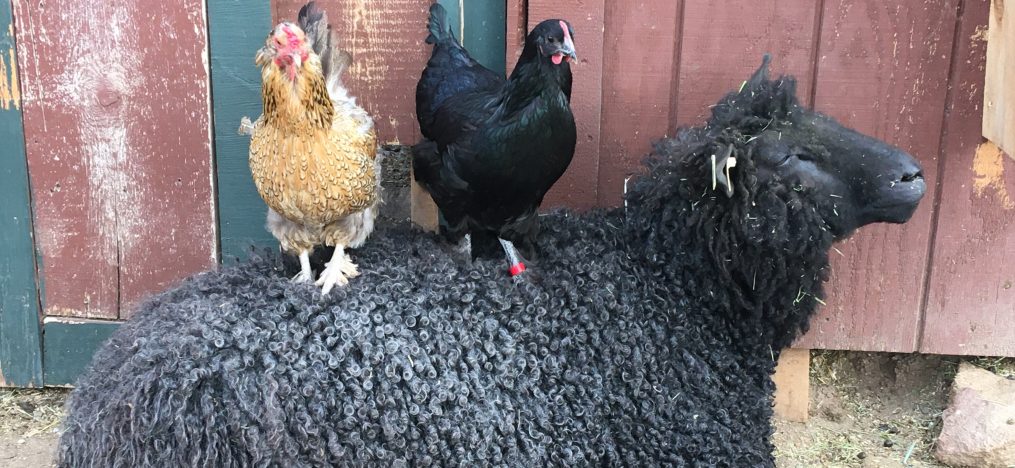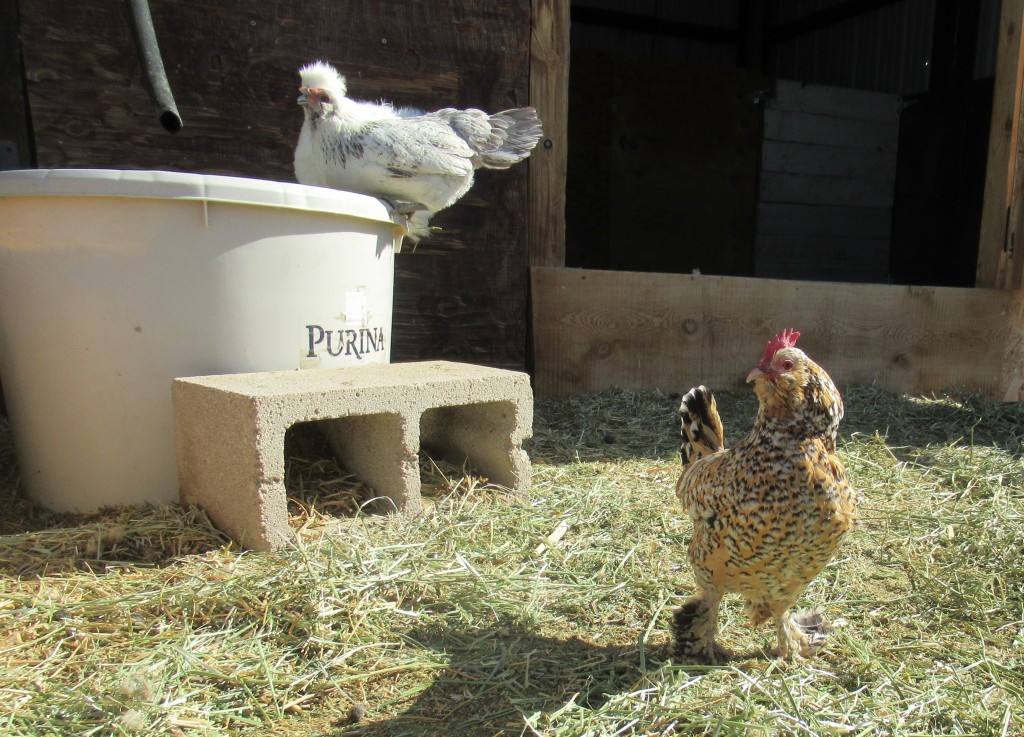The flies have arrived. And that, of course, also means maggots in stall bedding. Flies and maggots can be a big problem for sheep, due to their thick wool. So it is important that we keep them out of the sheep bedding and off the sheep. It is amazing how fast the maggots show up – even daily cleaning of the stalls doesn’t keep them fully away. This is where the chickens come to work.

When we had our little 3-acre homestead in the Rockies, our chickens shared the barnyard and stalls with the livestock. We never had maggot problems. Our first year at the new farm we quickly realized how important the chickens living with the livestock was to keeping the stalls clean. We have slowly devised ways to get the chickens into as many of the stalls/barns at the new farm as possible during the warm months of the year. They do a great job of scratching through the stall bedding and cleaning out all the maggots and other bugs. It is also free food for them, and mentally stimulating. It makes them an even more productive part of the farm ecosystem.
With the warm weather and flies returning, it was time to get the chickens back to work in the stalls. And with the new lambing barn, we had even more spaces that needed their expertise.

Last year we kept one rooster from one of the hatches and let him grow out with the flock. A couple of months ago he had matured enough that our adult rooster began bullying him. So we took the young roo and a few hens and put them in the turkey grow-out pen, making a second flock in preparation for the summer season.
This week we moved the bantams to the ewe barn to work there, and the young roo and his ladies are in the new lambing barn to work there. This also freed up some poultry housing so the chickens could be put to work in another way….coming in part 2.


Brilliant! Question…
Do they chickens sleep with the sheep and lay their eggs in there?
LikeLiked by 1 person
No. There are several issues with them fully living with the sheep. First, the sheep can’t eat the chicken feed or they will bloat and could die. Secondly, the chickens make quite a poop mess when they roost for the night, and we don’t want the sheep stalls being messed up with chicken mess, nor the sheep themselves getting pooped on if they sleep under the chickens.
So we have built some temporary coop areas in the barns, where the sheep can’t get in, for the chickens to sleep and roost in, and to keep their food in. We generally take one of the stalls (these are 5×5 or 6×6 sheep lambing jug stalls), put a roost in it, and set it up in a way that chickens can come and go but sheep can’t get in.
Another important concern with chickens living with sheep is that the chickens can drown in the sheep water troughs. So we put either a piece of cattle panel or bricks into the troughs so that if a chicken falls in they can get back out. We cut a piece of cattle panel to a size that it can lay in the trough diagonally, going from the bottom corner on one edge, up and sticking out the top on the opposite side. Or we stack some bricks in the trough high enough that the chickens can climb out. The wire is lower maintenance because we can more easily pull it out and clean the trough. But sometimes the sheep will try to play with it and pull it out. So we have had to get creative with how we keep it in there.
LikeLike
Awesome! I have goats, do you think this method could also work with them?
LikeLiked by 1 person
Yes. We have goats living with our sheep as well.
LikeLiked by 1 person
I forgot…as far as egg laying goes…we make them a nesting area in the temporary coop that we set up, which they will often use. But we also find that they like to find a cozy corner of the barn and lay there too. So we have to go on an egg hunt each evening around the barn to see where they decided to lay that day. The sheep leave the eggs alone. But if the LGD is with the flock she will happily eat them before we even know they were laid.
LikeLiked by 1 person